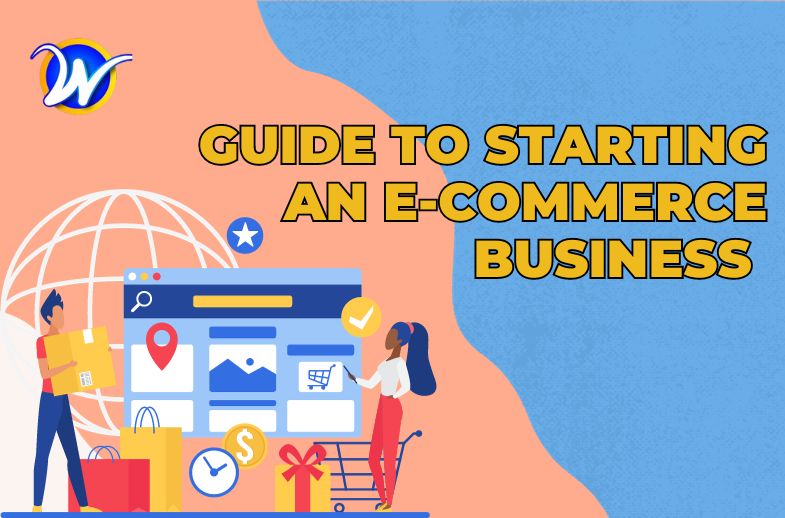Starting an e-commerce business in 2024? Very feasible and possible. An effective strategy, following trends, and using competitors to outdo them are some of the key things. This guide will greatly help you in successfully launching your business.
We’ll guide you through everything, step by step. From finding the right niche, targeting customers, and choosing the right marketing strategy. This guide is a mix of innovative ideas as well as some traditional tricks that have helped many businesses last for years. All of this is put together for entrepreneurs, people with a clear mission, as well as those who have doubts about starting their own business.
Step 1: Identifying Your Niche
Starting an e-commerce business in 2024? The first big move is pinpointing your niche.You need to find the right people – people who will be interested and will love what you have to offer.
Identifying a niche will shape everything from your brand and personality to your selling process. To hit the nail on the head with your niche, here’s what you should think about:
Market Research: Jump into the deep end of market trends and consumer behavior. Keep an eye out for emerging trends, overlooked needs, or sectors with less competition. Tools like Google Trends are great for getting a feel for what’s catching interest over time.
Follow Your Passion and Knowledge: Match your niche with what you love and know. A niche that you’re excited about keeps you motivated, and being knowledgeable gives you an edge.
Profitability Check: Ensure that your selected niche is financially rewarding. Assess the size and purchasing power of your potential customers. If holding inventory seems daunting, think about alternatives such as dropshipping or affiliate marketing.
Quick Tips to Spot Your Niche:
Solve a Problem: Search for niches that have a specific need or solve a problem.
Scope Out the Competition: Track your competitors and spot opportunities that they did not.
Chat with Your Future Customers: Hop onto social media or forums to really understand what your potential customers are looking for.
Finding that perfect niche is like hitting the sweet spot where your passions, market demand, and profitability intersect. It’s a big deal and forms the foundation of your e-commerce success. So, take your time, think it through, and make a choice that feels right!
Step 2: Putting Together Your Business Plan
Crafting a business plan is crucial part for launching your e-commerce business. It serves as a roadmap for a future and it can attract investors. Here are ten key components of a business plan:
- Executive Summary: Overview of your business, mission, and basic information.
- Company Description: Detailed information about your business, the problems it solves, and for who it is.
- Market Analysis: Analysis on industry trends, competition, and demographics that are targeted.
- Organization and Management: Your business’s structure, management team, and qualifications of your bord.
- Products or Services: Description of your offerings and their benefits to customers.
- Marketing and Sales Strategy: How you plan to attract customers.
- Funding Request: (If applicable) Specifics of your funding needs and preferred terms.
- Financial Projections: Five-year financial forecasts, including profit projections and break-even analysis.
- Appendix: Optional, for resumes, legal documents, and other relevant materials.
- Operational Plan: Details on daily operations, location, equipment, and inventory management.
Remember, a well prepared business plan not only serves as a roadmap for your venture but also demonstrates your seriousness and strategic thinking to stakeholders. Take the time to research and refine each part for a robust and persuasive business plan.

Step 3: Building Your Online Presence
Building an online presence is a key step in starting a business, especially now, in the digital age. Considering that a large part of the planet operates over the internet, it’s important to fight for your digital footprint. This way, you can increase brand visibility, and all of this plays a big role in attracting the interest of users and customers.
Partnering with a professional Webflow design agency can ensure that your site is not only aesthetically pleasing but also user-friendly and optimized for conversions. Webflow’s flexibility and scalability make it an ideal choice for e-commerce businesses aiming for long-term growth.
Importance of Building an Online Presence:
Brand Recognition: A quality website increases brand visibility and helps establish a strong identity in the digital marketplace.
Customer Reach: Online presence opens up global markets, removing geographical limitations and expanding your customer base.
24/7 Accessibility: Unlike traditional stores, an e-commerce website is accessible around the clock, enhancing customer convenience and boosting sales opportunities.
Crafting your online presence with the right tools and expertise is essential for the success of your e-commerce venture in today’s digital age.
Step 4: Logistics and Operations
Handling logistics and operations is the fourth step in the successful launch of your e-commerce business. This is one of the most important steps in launching your business because it’s the first time customers have contact with a product.
Good, quality and effective management of logistics and operations is key to customer satisfaction and can significantly impact your business’s reputation and bottom line.
Supply Chain Management: Reliable supply chain ensures consistent availability of products. This includes selecting dependable suppliers and considering factors like lead times and inventory management.
Shipping and Fulfillment: Choose the right shipping partners to offer a range of options like expedited shipping, tracking services, and international delivery. Consider implementing an order fulfillment strategy that scales with your business growth.
Customer Service and Returns: Develop a clear policy for customer service and returns. This is important because handling of customer inquiries, complaints, and returns can greatly enhance customer trust and loyalty.
Efficiently managing these aspects will create a positive shopping experience, encouraging repeat business and customer referrals and also streamline your business operations.
Step 5: Marketing Strategies
Strategic marketing is a modern approach to managing marketing, which implies a continuous process of adapting to the market. It is defined as an active process of determining and guiding marketing activities according to marketing goals or changes that have occurred in the environment.
Marketing Strategy includes:
- Analysis of environmental factors
- Strengths and weaknesses of the company
- Planning of marketing activities
- Defining marketing strategies
- Implementation of the strategy
- Control and review of marketing results
Here are three fundamental tactics to guide your marketing strategy:
Target Audience Analysis: Start by understanding your target market inside out. Research their likes, online conduct, and shopping patterns. This insight helps you to create messages that have deep meaning to your audience in order to increase engagement and conversions.
Diversify Your Marketing Channels: Don’t depend exclusively on one marketing channel. Look at using a number of digital marketing channels such as SEO for the search engines, social media marketing, email campaigns and pay-per-click advertising. This is a multichannel strategy that allows reaching out to more people and accommodating varying user preferences.
Emphasize Quality Content and SEO: Content is king in the digital realm, and it is here that important SEO hacks emerge. Develop quality, relevant and interesting content that meets the needs and interests of your audience. When combined with powerful SEO strategies, this increases the visibility of your website in search engine results. This strategy is one of the top SEO tricks that can bring more organic traffic to your site by using beautifully composed content and intelligent optimization techniques.
Conclusion
It is essential to recognize that starting an e-commerce business is a process of strategy, adaptability and persistence. The e-commerce market is in constant development and knowing what’s new allows one to stay ahead. Anyone who wants to start has to be alert, motivated and possess an entrepreneurial spirit.
Use strategies and regularly analyse the market. Listen to your customers and users and make plans according to their needs, because, after all, they are the ones who keep the business alive.



